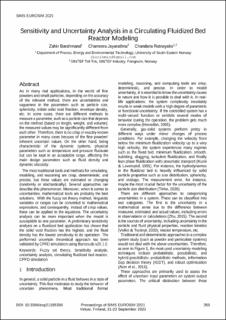| dc.description.abstract | As in many real applications, in the world of fine powders and small particles, there are uncertainties and vagueness in the parameters such as particle size, sphericity, initial solid void fraction, envelope density, etc. In some cases, there are different methods to measure a parameter, such as a particle size that depends on the method (based on length, weight, and volume); the measured values may be significantly different from each other. Therefore, there is no crisp or exactly known parameter in many cases because of the fine powders' inherent uncertain nature. On the other hand, being characteristic of the dynamic systems, physical parameters such as temperature and pressure fluctuate but can be kept in an acceptable range, affecting the main design parameters such as fluid density and dynamic viscosity. The most traditional tools and methods for simulating, modeling, and reasoning are crisp, deterministic, and precise, but these values are estimated or changing (randomly or stochastically). Several approaches can describe this phenomenon. Moreover, when it comes to uncertainties, mathematical tools are probably the best solutions. With the fuzzy set theory method, linguistic variables or ranges can be converted to mathematical expressions, and consequently, instead of crisp values, these can be applied to the equations. The uncertainty analysis can be more important when the model is susceptible to one parameter. A preliminary sensitivity analysis on a fluidized bed application has shown that the solid void fraction has the highest, and the fluid density has the lowest sensitivity to its operation. The theoretical approach has been validated by CPFD simulation using Barracuda v20.1.0. | en_US |

